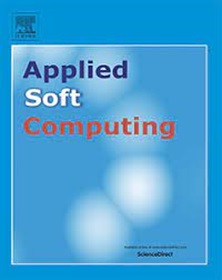Viable intertwined supply network: Modelling and dynamic analysis using artificial neural networks
IF 7.2
1区 计算机科学
Q1 COMPUTER SCIENCE, ARTIFICIAL INTELLIGENCE
引用次数: 0
Abstract
The viability of intertwined supply networks (ISNs) has recently been studied as a critical topic in operations management. Modelling the viability of ISNs is considered a promising tool to meet the demands of extraordinary events, such as the Russo-Ukrainian War and the COVID-19 pandemic. To enhance the viability of ISNs, the structures of ISN must be modelled, and the behavioral dynamics of interactions between firms in a changing environment should be analyzed. In this study, a trophic chain-based dynamic formulation of ISN viability is presented, and a solution methodology for dynamic analysis of the ISN viability model is designed. The concept of artificial neural networks (ANNs) in ISN analysis is introduced to predict and analyze future behavioral strategies in buyer-supplier relations. The dynamic model of ISN is represented by a system of nonlinear differential equations and described in terms of three dynamic values: suppliers , focal firms , and market demand . The stochastic numerical simulations are performed for the dynamics of ISN model by employing ANNs with a scaled conjugate gradient neural network (SCGNN) in a more advanced and efficient manner. Two numerical cases are investigated to evaluate the performance of the proposed approach. The validation, correctness, and reliability of the proposed stochastic SCGNN technique are analyzed by selecting 78 % of the data for training, 12 % for validation, and 10 % for testing. The correctness of the scheme is authenticated through the overlapping of the proposed and state-of-the-art results. Moreover, the statistical analysis is presented graphically in terms of mean square error, state transitions, function fitness, error histograms. The regression coefficient values are calculated as 1 for each scenario presents the perfect model. Finally, a comparison of numerical results, which shows the overlapping is examined and the absolute error is performed between 10−05 to 10−07. The small mean square error performances enhance the correctness of the scheme. These results indicate that the dynamical model can effectively analyze the ISN structures and help researchers and practitioners ensure the survival of supply chains during extraordinary events.
可行的交错供应网络:利用人工神经网络建模和动态分析
近年来,交织供应网络(ISNs)的可行性已成为运营管理中的一个重要课题。对ISNs的可行性进行建模被认为是一种很有前途的工具,可以满足俄罗斯-乌克兰战争和COVID-19大流行等特殊事件的需求。为了提高创新网络的生存能力,必须对创新网络的结构进行建模,并分析企业在不断变化的环境中相互作用的行为动力学。在本研究中,提出了一个基于营养链的ISN生存力动态公式,并设计了ISN生存力模型动态分析的求解方法。在ISN分析中引入人工神经网络(ann)的概念来预测和分析未来买卖双方关系中的行为策略。ISN的动态模型由一个非线性微分方程系统表示,并用三个动态值来描述:供应商Xτ、焦点企业Yτ和市场需求Zτ。采用带有缩放共轭梯度神经网络(SCGNN)的人工神经网络对ISN模型的动力学进行了更先进、更有效的随机数值模拟。研究了两个数值实例来评估该方法的性能。通过选择78%的数据用于训练,12%用于验证,10%用于测试,对所提出的随机SCGNN技术的有效性,正确性和可靠性进行了分析。方案的正确性通过提出的和最先进的结果的重叠来验证。此外,从均方误差、状态转移、函数适应度、误差直方图等方面对统计分析进行了图解。每个场景的回归系数值计算为1,给出了最完美的模型。最后,对数值计算结果进行了比较,结果表明,在10−05 ~ 10−07之间存在重叠现象,绝对误差在10−05 ~ 10−07之间。均方误差小的性能提高了方案的正确性。研究结果表明,该模型能够有效地分析供应链信息系统结构,帮助研究人员和实践者确保供应链在异常事件下的生存。
本文章由计算机程序翻译,如有差异,请以英文原文为准。
求助全文
约1分钟内获得全文
求助全文
来源期刊

Applied Soft Computing
工程技术-计算机:跨学科应用
CiteScore
15.80
自引率
6.90%
发文量
874
审稿时长
10.9 months
期刊介绍:
Applied Soft Computing is an international journal promoting an integrated view of soft computing to solve real life problems.The focus is to publish the highest quality research in application and convergence of the areas of Fuzzy Logic, Neural Networks, Evolutionary Computing, Rough Sets and other similar techniques to address real world complexities.
Applied Soft Computing is a rolling publication: articles are published as soon as the editor-in-chief has accepted them. Therefore, the web site will continuously be updated with new articles and the publication time will be short.
 求助内容:
求助内容: 应助结果提醒方式:
应助结果提醒方式:


